Though white feathers may be beneficial to birds who live in snowy climates, that is not the only climate in which they are found. This article will discuss a few different types of majestic birds that share this stunning plumage.
Table of Contents
10 Types of White Birds
1. American Herring Gull
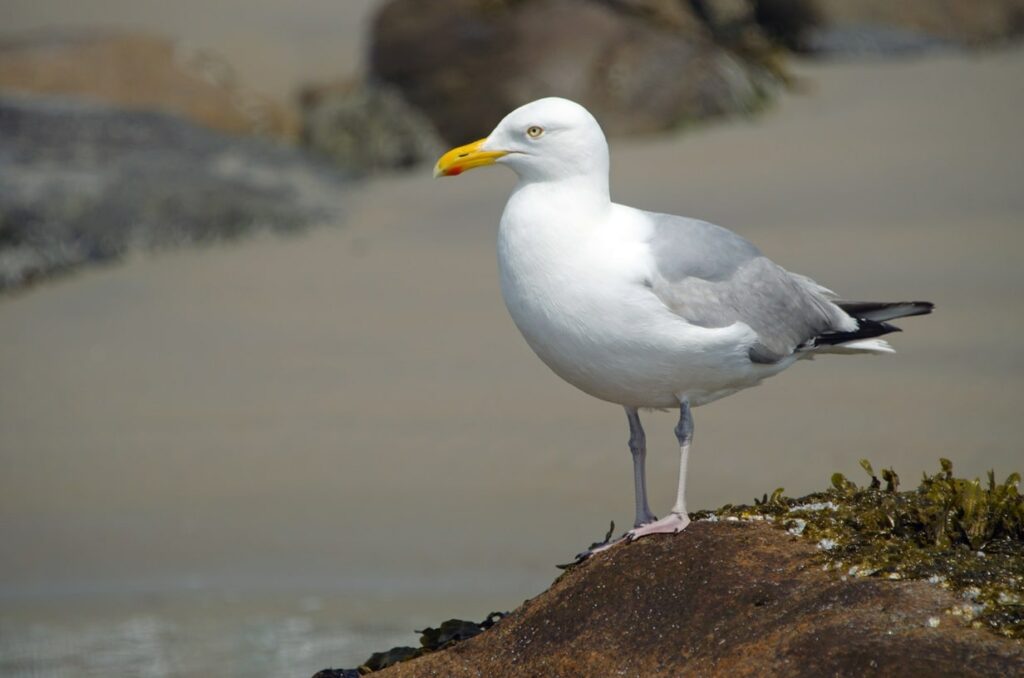
- Scientific Name: Larus Smithsonianus
- Size: 22.1 to 26 inches
- Weight: 28.2 to 44.1 ounces
- Wingspan: 53.9 to57.5 inches
Having a fondness for water, the American herring gull is found mostly along the coasts of North America but does venture across the United States and much of Canada to breed. American herring gulls make their homes around large waterways like oceans, major rivers, the Great Lakes, and reservoirs.
With American herring gulls, both parents build their shallow nests on the ground near a shrub or rock large enough to protect the eggs from high winds. The female will lay one to four eggs in her once-per-year brood.
Sibling rivalry is something that plagues American herring gulls with a third egg often hatching later than the other two, which results in less food, lower body weights, and slower growth.
2. American White Pelican
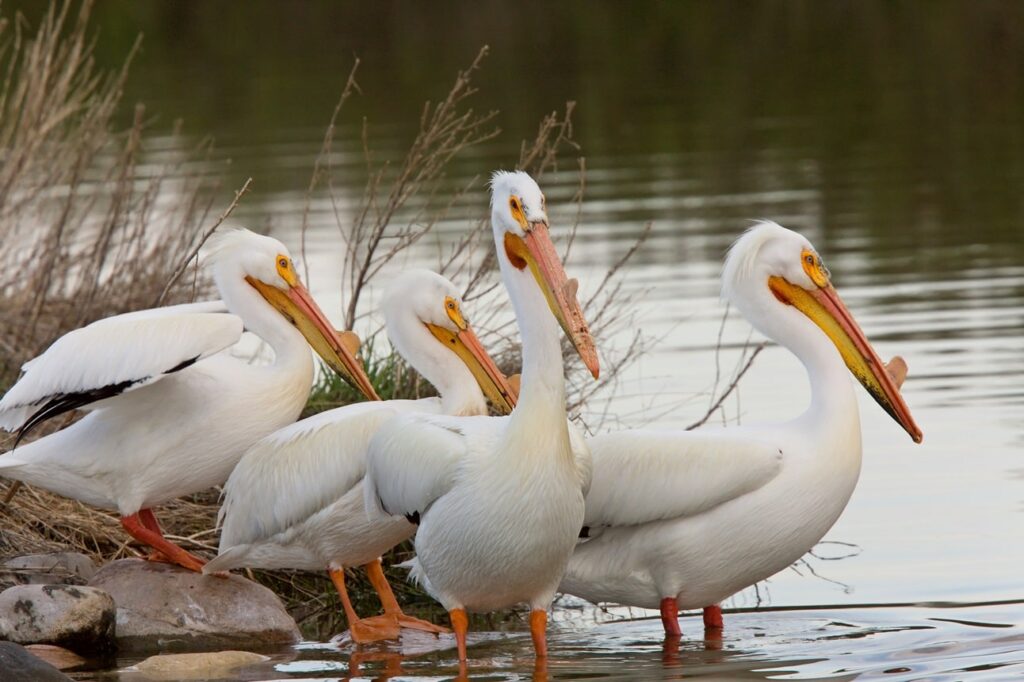
- Scientific Name: Pelecanus Erythrorhynchos
- Size: 50 to 65 inches
- Weight: 9.9 to 19.8 pounds
- Wingspan: 96.1 to114.2 inches
The American white pelican is seen most commonly in southeastern states from Florida to Texas, California, and the eastern and central portions of Mexico. These birds have been known to migrate and breed as far north as Canada and through the western portion of the United States. Though they breed on wetlands a ways inland, many American white pelicans spend winters on water or just barely inland (like bays).
Making a shallow impression in soft ground to serve as a nest, both the male and female American white pelicans will take turns incubating the eggs laid on a secluded island. A female will have two to three eggs in her one brood per year.
Unlike pelicans in cartoons, American white pelicans will not carry their food miles in their bill pouches, which are used for catching prey. They will swallow anything caught in their bill before flying too far.
3. Mississippi Kite
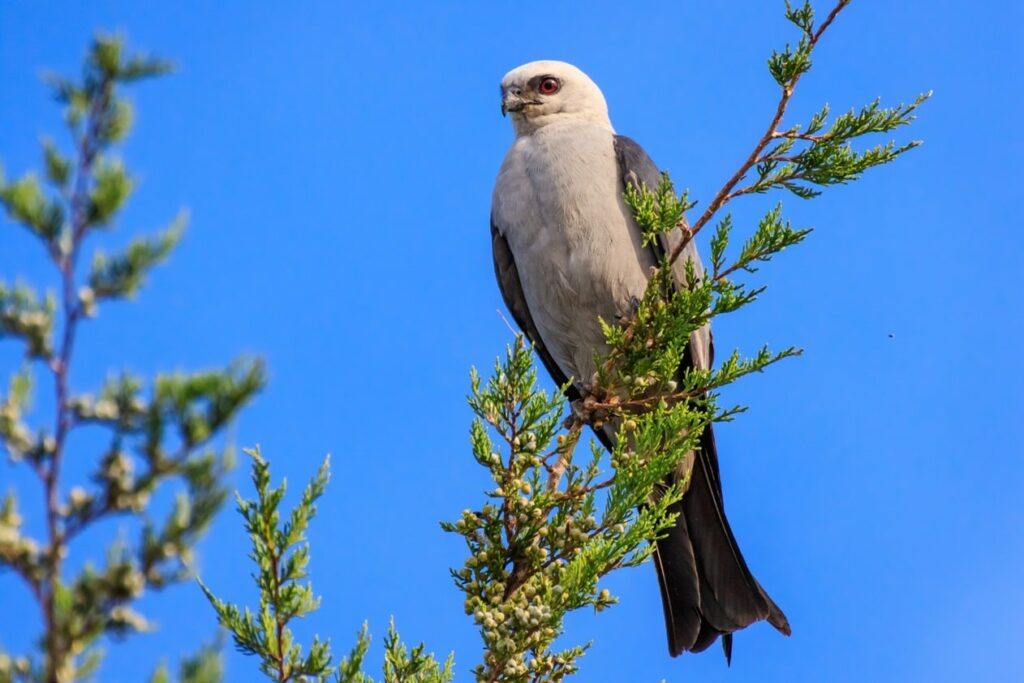
- Scientific Name: Ictinia Mississippiensis
- Size: 12 to 15 inches
- Weight: 7.6 to 13.7 ounces
- Wingspan: 36 inches
Despite their name, Mississippi kites are native to South America, where Bolivia, Brazil, and Argentina all touch Paraguay. However, they do migrate up through northern South America, Mexico, and the United States to breed in southeastern states. They prefer hardwood forests in the southeastern United States but often make home in parks, urban areas, windbreaks, and shelterbelts.
Mississippi kites make rather flimsy nests of twigs and greenery that they put about twenty to thirty-five feet up in a sturdy tree located near a woodlot. The female will have one brood per year consisting of one or two eggs.
Many Mississippi kites will make their nests either next to or around a wasp nest to help protect their eggs from climbing predators and often allow smaller bird species (such as blue jays) to nest close to them.
4. Royal Tern
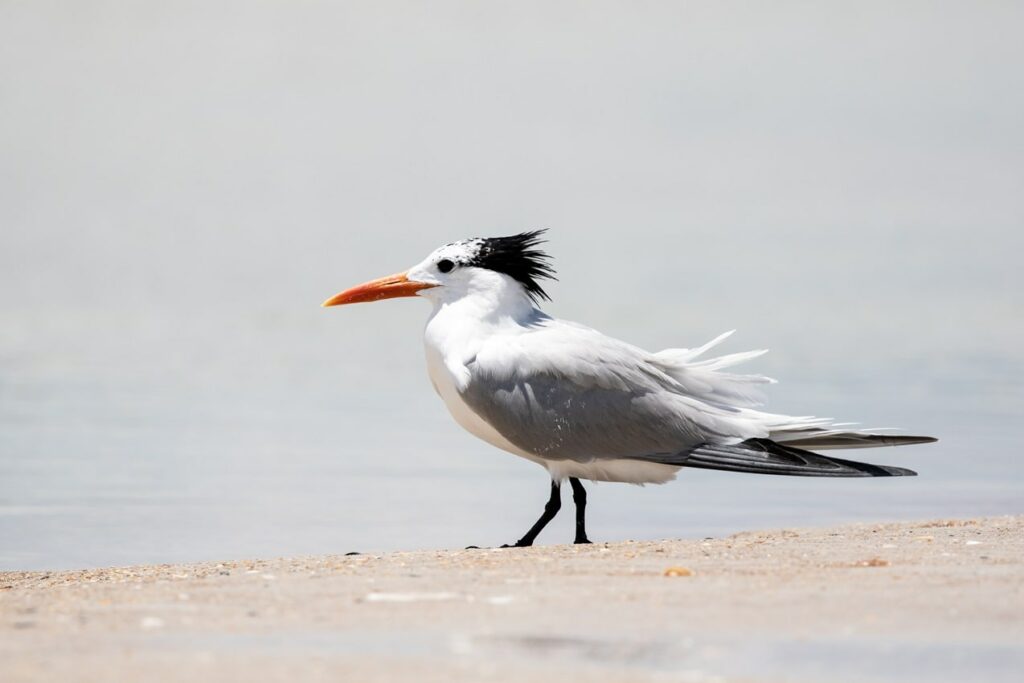
- Scientific Name: Thalasseus Maximus
- Size: 17.7 to 19.7 inches
- Weight: 13.8 to 15.2 ounces
- Wingspan: 39.4 to 43.3 inches
The royal tern has been known to make their homes in the coasts of the United States and Mexico as well as on islands like Puerto Rico, Cuba, and the Caribbean Islands. They like to inhabit shallow, warm water by waterways including bays, oceans, and rivers and rarely venture too far inland.
Similar to the American white pelican, royal tern parents have been known to make nests out of shallow depressions in the ground without laying any additional debris inside. The female will have one brood consisting of one egg (on occasion, two).
Royal tern chicks will leave their nest at the age of a day old and join a “nursery” of chicks between the ages of two and thirty-five days old. The parent will find its chick from it’s unique call.
5. Snow Bunting
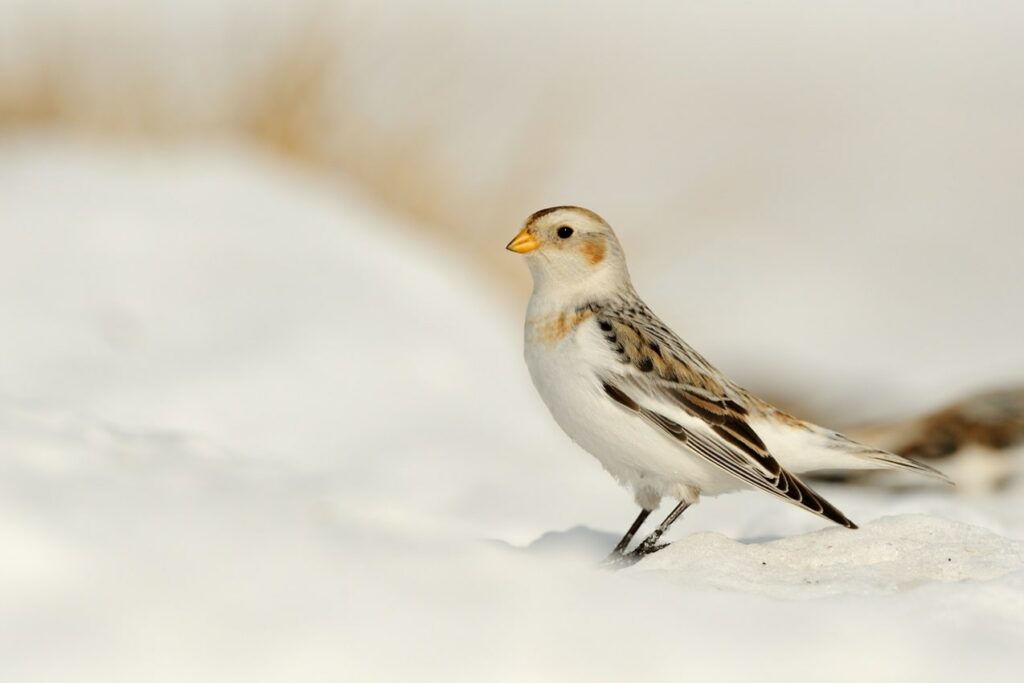
- Scientific Name: Plectrophenax Nivalis
- Size: 5.9 inches
- Weight: 1.1 to 1.6 ounces
- Wingspan: 11.8 inches
The snow bunting can be found throughout the northern United States and in southern parts of Alaska and Canada, but they do breed in northern Canada and Alaska. This peculiar little bird prefers open, grassy fields or shorelines where debris has piled up from strong winds or waves.
When she becomes pregnant, a female snow bunting will build her nest (mostly made of grass and moss) in some kind of ground cavity, such as a deep fissure in a rock. She will lay two to nine eggs in her yearly brood.
While it seems like a bad idea, male snow buntings will head to the frigid breeding grounds when temperatures can reach as low as -22°F. This is to ensure that they get one of those coveted nesting spots before the female joins them three to four weeks later.
6. Snowy Egret
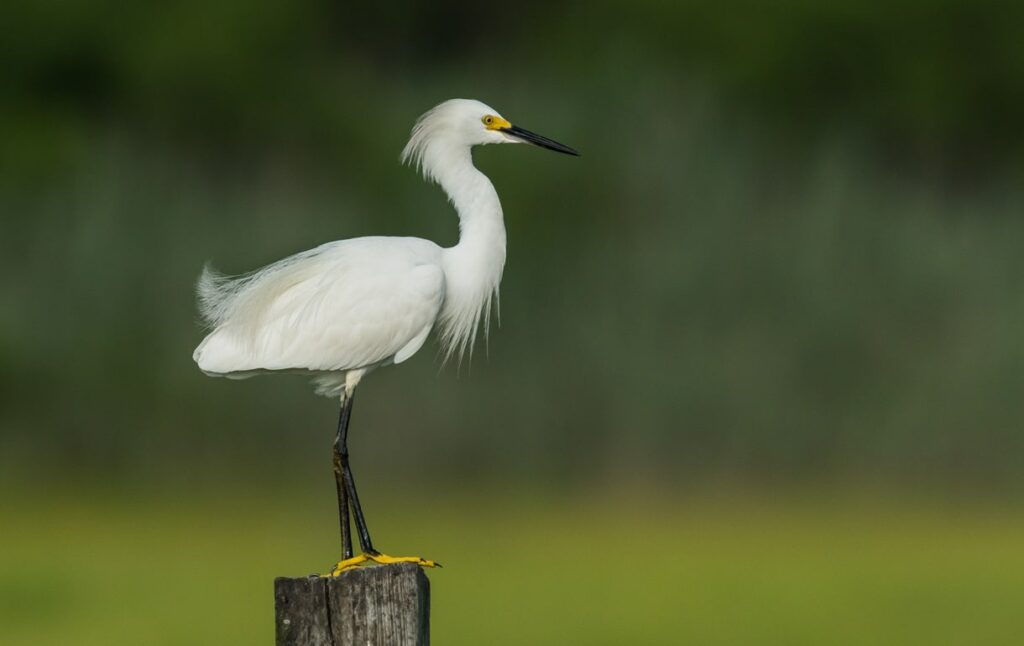
- Scientific Name: Egretta Thula
- Size: 22.1 to 26 inches
- Weight: 13.1 ounces
- Wingspan: 39.4 inches
Snowy egrets can be found along the southern coast of the United States, throughout Mexico and the Caribbean islands, and on the western portion of South America, however, they will travel into the United States for breeding. Preferential to mudflats, coastlines, wetlands, and beaches, snowy egrets can also be found in wet farmland that borders rivers and lakes.
Both snowy egret parents will help build their twig-based nest around five to ten feet up in a bush or tree. When the time comes, the female snowy egret will have two to six eggs in her annual brood.
As typical for a few different types of birds, both snowy egrets will take turns incubating the eggs. Unlike other birds, the snowy egret will sometimes present a stick to its mate when switching, almost as if it is passing a baton off.
7. Snow Goose

- Scientific Name: Anser Caerulescens
- Size: 27.2 to 32.7 inches
- Weight: 3.5 to 7.2 pounds
- Wingspan: 54.3 inches
The snow goose is native to North America with its population densely spread around the United States and the coasts of Mexico, but it can also be spotted in Canada during mating season. You can spot snow geese on any stretch of farmland as well as wetlands that surround lakes, rivers, ponds, and marshes.
Snow geese will have one to seven eggs in their annual broods. Unlike other birds, snow geese primarily build their nests after they’ve laid their first egg. The female will choose a depression in the ground to fill with plant debris and down feathers.
If you happen upon a snow goose nest, you would be able to tell which egg was the oldest by the dirtiness of the shell. Since they are creamy white in color, snow geese eggs stain quite easily.
8. Snowy Owl
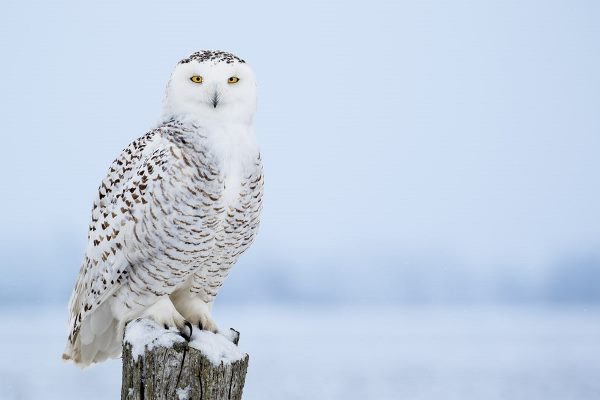
- Scientific Name: Bubo Scandiacus
- Size: 20.5 to 27.9 inches
- Weight: 3.5 to 6.5 pounds
- Wingspan: 49.6 to 57.1 inches
Unbothered by colder climates, the snowy owl is native to the northern United States and Canada. They even breed in the far north reaches of Canada’s tundra. In the winter, you can spot snowy owls by the ocean and lakes as well as farmland and airport lands.
Choosing a raised spot in the tundra to give their excellent eyes a good vantage point, snowy owl females will build their nest in a depression in the tundra ground. There, she will lay three to eleven in her annual brood.
Unlike most other owls, snowy owls are most active during the day (also referred to as diurnal). This is where living close to the arctic is advantageous as they have almost endless sun in the summers.
9. Trumpeter Swan
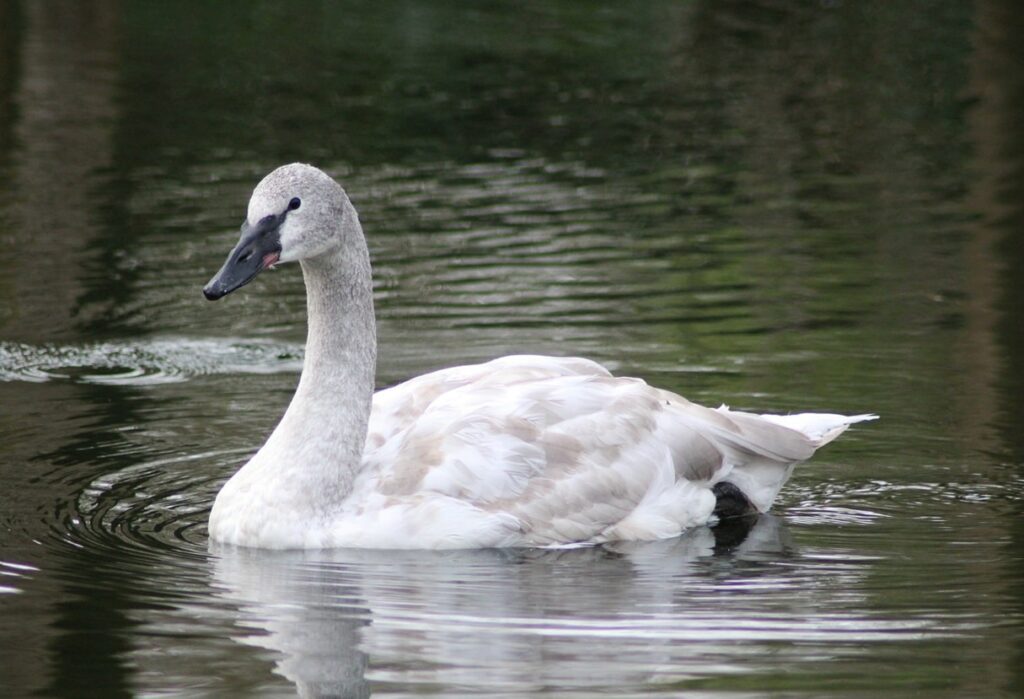
- Scientific Name: Cygnus Buccinator
- Size: 54.3 to 62.2 inches
- Weight: 17 to 28 pounds
- Wingspan: 79.9 inches
Trumpeter swans are scattered throughout parts of the United States and Canada. Their primary breeding grounds are the northern United States and western Canada. In the winters, trumpeter swans look for waterways that will remain partially ice-free but will settle for fields.
Though the female may be seen doing most of the work, both genders of trumpeter swan help build the bowl-shaped nest. Typically, a female trumpeter swan will have three to six eggs but can have up to nine in her once-per-year brood.
10. White-Breasted Nuthatch
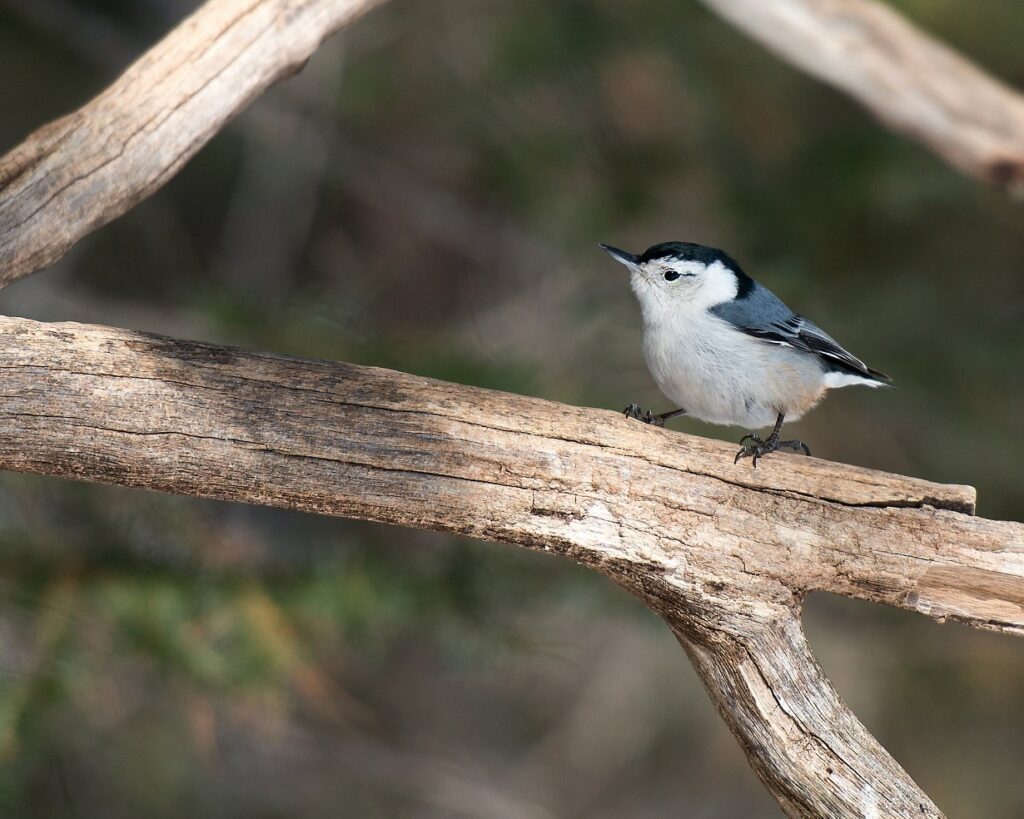
- Scientific Name: Sitta Carolinensis
- Size: 5.1 to 5.5 inches
- Weight: 0.6 to 1.1 ounces
- Wingspan: 7.9 to 10.6 inches
The white-breasted nuthatch is native to North America but is predominately seen throughout the United States, central Mexico, and southern Canada. Preferring deciduous trees, white-breasted nuthatches tend to make home in woodlands and forests with maple, oak, basswood, and hickory trees.
After finding a cavity fifteen to sixty feet up in a tree (sometimes a birdhouse), the female white-breasted nuthatch will build the nest cavity, a cup of bark fibers, twigs, hair, and grass. She will then lay five to nine eggs in her brood once per year.
If you have feeders in your yard and notice a white-breasted nuthatch flitting back and forth with more food than it could consume, it may be storing up food for the winter. They do this by wedging seeds into the furrows of bark on trees.
